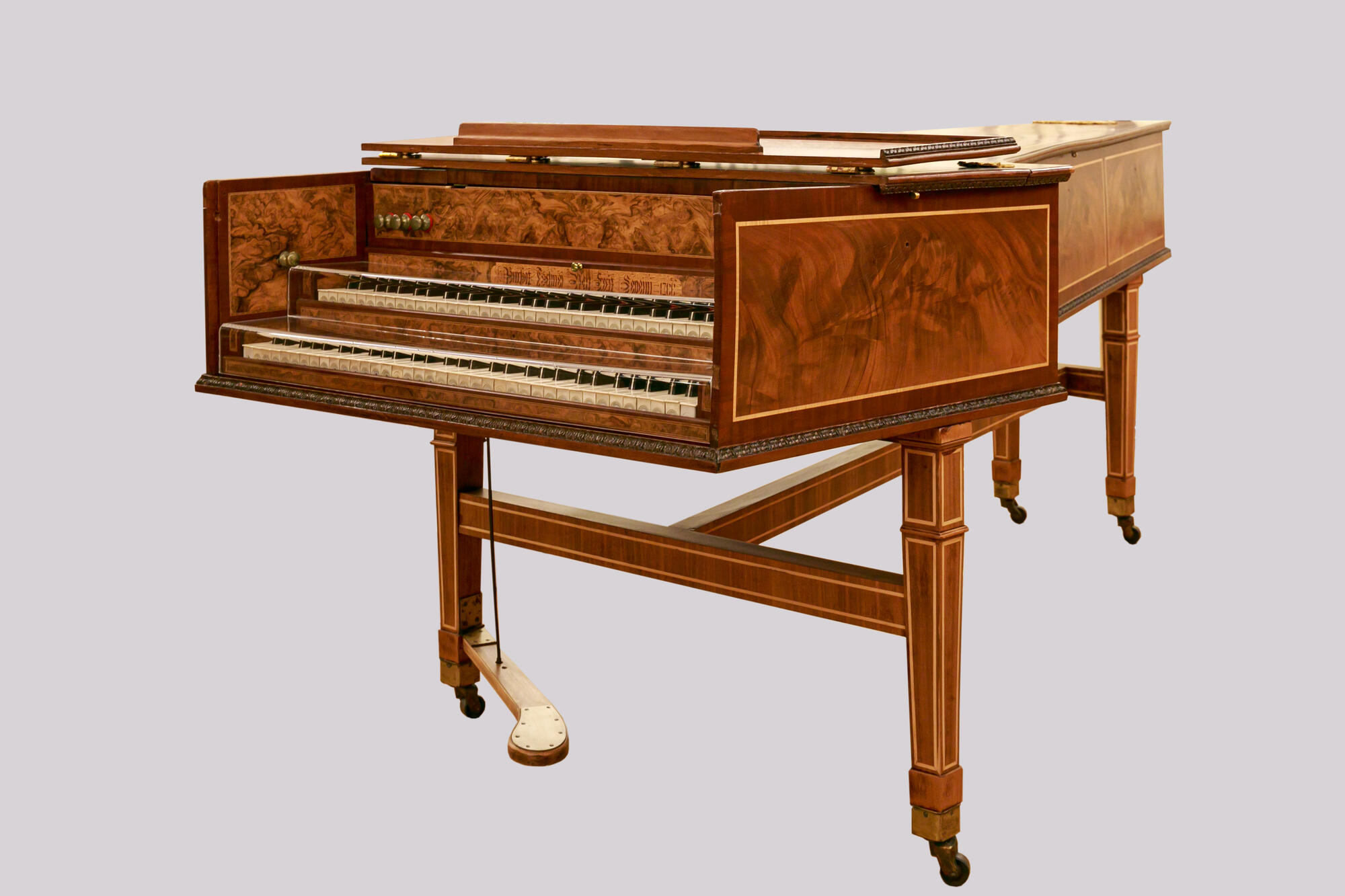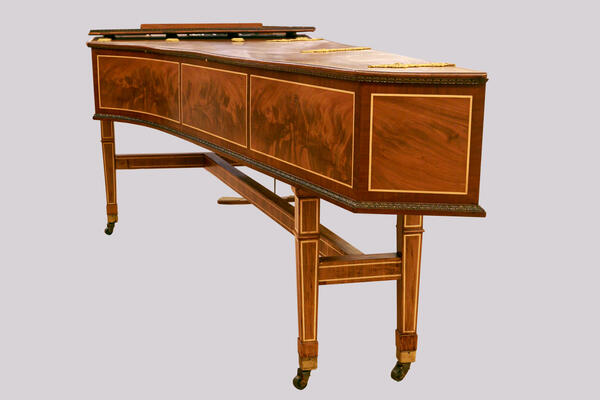The harpsichord from the collection of the Russian National Museum of Music was made by the famous craftsman Burkat Shudi in London in 1766. It was commissioned by Frederick the Great, King in Prussia, for his new Sanssouci Palace in Potsdam.
Burkat Shudi was born in Switzerland. At the age of 16, he moved to England where he started working under the famous harpsichord maker Hermann Tabel. Before long, Shudi mastered the art of building harpsichords, and in the late 1720s, he started working on his own. The oldest surviving harpsichord by Shudi was manufactured in 1729.
Burkat Shudi is known as one of the creators of the new 18th-century harpsichord. His instruments represent the most celebrated period in the history of the English harpsichord. Shudi’s instruments were used by some of the most prominent musicians of his time.
His customers included George Frideric Handel, Joseph Haydn, Muzio Clementi, and Charles Burney. His harpsichords were also favored by the members of various European royal families, including Frederick, Prince of Wales, and Maria Theresa, the Archduchess of Austria.
Shudi’s double-manual harpsichord was valued for its rich tone quality and, like his other instruments, had a wide range of over five octaves. Apart from the three main registers, it also had a lute stop and a harp stop, as well as the “tutti” mechanism that allowed the player to engage all the registers at the same time.
The instruments from Shudi’s workshop met the expectations and requirements of musicians. When the young Wolfgang Amadeus Mozart visited London in May 1765, he played on one of Shudi’s double-manual harpsichords.
Carl Philipp Emanuel Bach, the main harpsichord player at the court of Frederick the Great, played the monarch’s instruments, performing both solo and accompanying the king who was playing the flute. Burkat Shudi produced four harpsichords for Frederick the Great. One of them, harpsichord No. 512, eventually came to the Museum of Music in Moscow. It is used at concerts organized by the museum.
Burkat Shudi was born in Switzerland. At the age of 16, he moved to England where he started working under the famous harpsichord maker Hermann Tabel. Before long, Shudi mastered the art of building harpsichords, and in the late 1720s, he started working on his own. The oldest surviving harpsichord by Shudi was manufactured in 1729.
Burkat Shudi is known as one of the creators of the new 18th-century harpsichord. His instruments represent the most celebrated period in the history of the English harpsichord. Shudi’s instruments were used by some of the most prominent musicians of his time.
His customers included George Frideric Handel, Joseph Haydn, Muzio Clementi, and Charles Burney. His harpsichords were also favored by the members of various European royal families, including Frederick, Prince of Wales, and Maria Theresa, the Archduchess of Austria.
Shudi’s double-manual harpsichord was valued for its rich tone quality and, like his other instruments, had a wide range of over five octaves. Apart from the three main registers, it also had a lute stop and a harp stop, as well as the “tutti” mechanism that allowed the player to engage all the registers at the same time.
The instruments from Shudi’s workshop met the expectations and requirements of musicians. When the young Wolfgang Amadeus Mozart visited London in May 1765, he played on one of Shudi’s double-manual harpsichords.
Carl Philipp Emanuel Bach, the main harpsichord player at the court of Frederick the Great, played the monarch’s instruments, performing both solo and accompanying the king who was playing the flute. Burkat Shudi produced four harpsichords for Frederick the Great. One of them, harpsichord No. 512, eventually came to the Museum of Music in Moscow. It is used at concerts organized by the museum.




